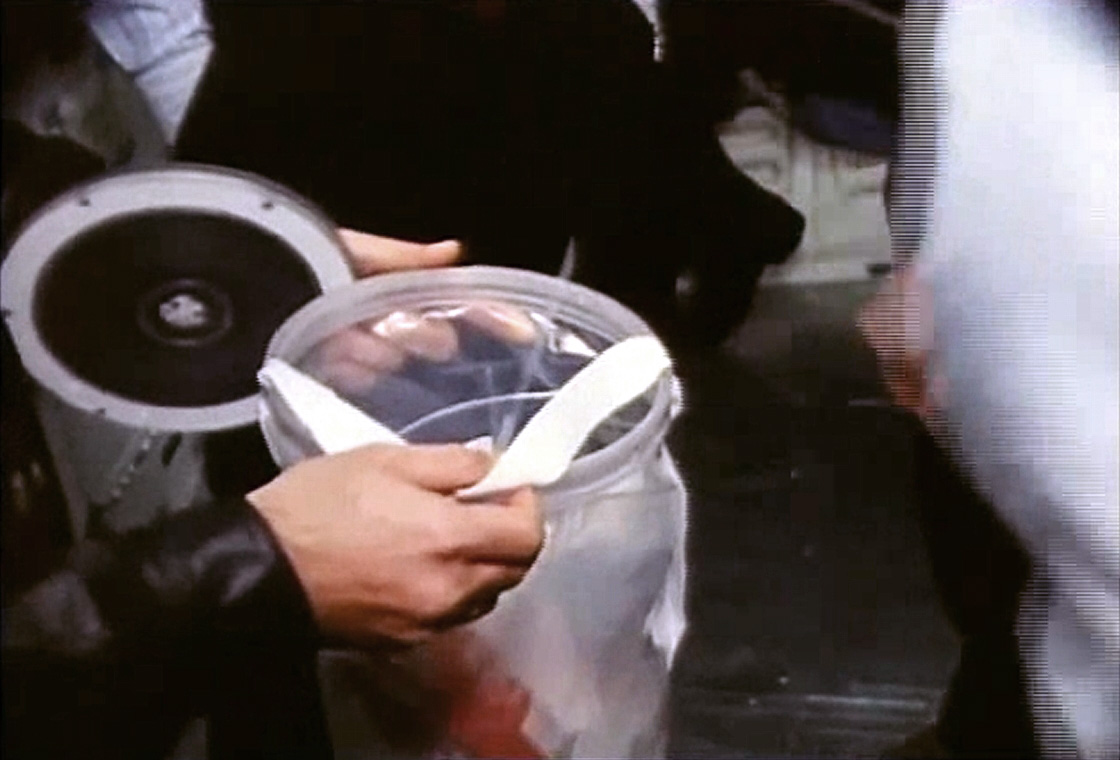Item: Trash compator bag for the Space Shuttle and the International Space Station (ISS)
Size: 17.3 x 2.2 cms.Weight: 379 grs.
Descripcion: Trash compactor bag designed for the Extended Duration Orbiter [EDO] trash compactor. It was located on the mid deck of the Space Shuttle.
The experimental shuttle trash compactor flied on STS-35 for the first time as Detailed Test Objective DTO 634, The compactor became an important part of shuttle hardware as NASA begins flying Extended Duration Orbiter flights.
The 48-pound compactor fits in place of a middeck locker and is operated manually. Trash is placed inside a polypropylene bag which, when full, is placed inside the chamber of the compactor. One bag holds a volume equivalent to one-half cubic foot. A metal compactor door is closed securing the bag inside the chamber. A crewmember then uses handles on either side of the compactor in a garden shear-type movement to engage gears which push a piston from the back of the chamber to the front, compressing the trash to a volume four times smaller. The piston compresses the trash using a force of about 60 pounds per square inch. Operating the EDO trash compactor could provide a type of exercise for the crew.
Pam Alloway, NASA News Release No. 90-025, Mar. 16, 1990 - edited.
After the piston is moved as far forward as it was designed to go, the crewmember retracts the piston, opens the compactor door, and pulls a strap to remove the bag from the chamber. The bag has a lid which houses a charcoal filter to contain odors, fluids an bacteria. A one-way air valve in the lid allows air out of the bag, relieving pressure built up during compaction. Next, the entire package is placed inside the orbiter trash stowage compartment. The bags fit through an eight-inch-diameter hole in the middeck floor. This compartment, known as Volume F, normally is used for wet trash stowage.
About ten years ago Johnson Engineering Corp. in Boulder, Colorado, began working on a concept for an orbiter trash compactor that could be developed commercially for recreational vehicles. Using that experience the company bid on a contract in July 1989 to design a shuttle trash compactor. The design has been tested and certified using a variety of items, including food, water, flight trash, plastic and metal food containers, and teleprinter pages.
Source:





















Follow me